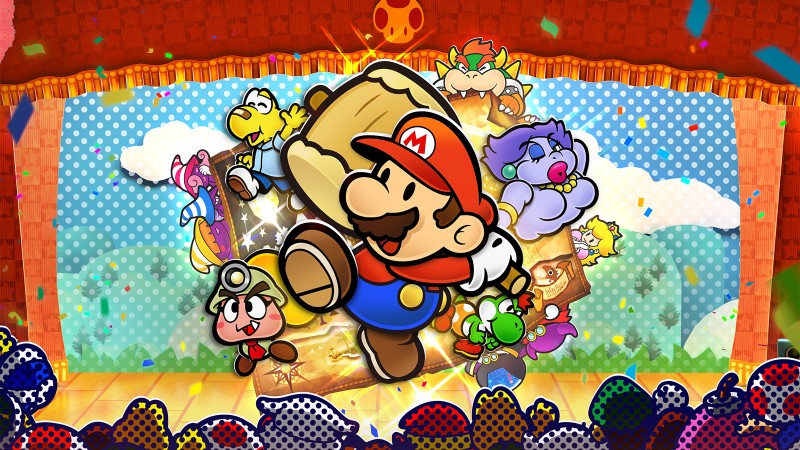The Mario brand of RPG represents some of my favorite adventures in the genre. The comedic tone, inviting art, and active battle systems have always been highlights for me, but Thousand-Year Door was a personal blind spot. I played prior and subsequent Mario RPGs, but I skipped it when the original was released in 2004, and notably was not yet employed at Game Informer at the time. With Nintendo remastering the acclaimed RPG for Switch, I welcomed the excuse to finally play it. I am impressed by how improved the visuals and music are two decades later, and found that, for the most part, the comedy holds up. I now fully appreciate and understand Thousand-Year Door’s reputation as a classic, but it is not without its 20-year-old headaches. It arguably presents the first signs that the series would be less interested in being an RPG in the coming years and would ultimately suffer as a result.

Thousand-Year Door has always been an attractive game. Nintendo is practiced at prioritizing evergreen art styles over fidelity, and Paper Mario is a poster child of that approach. Lighting effects are the primary improvement for the Switch version, and they make a huge difference – the game looks fantastic and modern throughout. Beyond the look of the game, a number of small changes (like faster partner switching and shortcut keys) help smooth out the experience and just generally remove annoying hurdles.
Combat also remains enjoyable without much need for modernization. I am a sucker for timed-button pressing in any RPG, and I welcome it here, but I was surprised to see that the execution prompts exist throughout the whole game. I assumed they would disappear after the tutorials, and was annoyed to learn they never leave. And though necessary and tactically useful, the special abilities are time-consuming, and I would dread having to engage them. That feeling extended to the partners as well, and I used the ones whose attacks could be executed the fastest, even if they didn’t do the most damage.

Over time, the Mario RPG series has wavered between being an adventure game and an RPG, and it is here that the Paper branch of the tree started growing more in the adventure direction. Subsequent games, like 2020’s The Origami King, completely drop leveling mechanics, which is a mistake. I love having a sense of progression, and enjoyed it here even if I felt like I was going back in time to see its final hurrah.
Where the adventure game mechanics work is in the game’s worlds and characters. It is a breath of fresh air to see wholly new characters in a Mario game, especially on the occasions when they feel out of place with the Mario aesthetic. I looked forward to seeing every new location and weirdo that lived there and was never disappointed.
But further on that desire to be as much an adventure game as an RPG that Paper Mario has always struggled to reconcile, Thousand-Year Door has too much backtracking. Nearly every location in the game involves going to the end of an area to acquire an item, taking it back to someone, and then going back to where you were and redoing every fight on the way. With limited options for fast travel, the process was often tedious.
The sequences where you are not playing as Mario are similarly unexciting. Peach has fun dialogue with an AI struggling to understand emotions and enjoyable puzzles to solve, but if Bowser had been entirely excised from the game, I don’t think I would have noticed or cared. His minor payoff at the end was not worth checking in with him between every chapter.
For all the annoyances of repeating areas and slow (but engaging) combat, Thousand-Year Door is now a series highlight. It marks the first instance of where I didn’t want a Mario RPG to go (I generally prefer the Mario & Luigi direction), but the constant fourth-wall breaking, myriad colorful and unique characters, and its willingness to just be weird all lead to a joyful journey. I am grateful that this shined-up version of the GameCube classic I missed is finally available on a contemporary platform.

